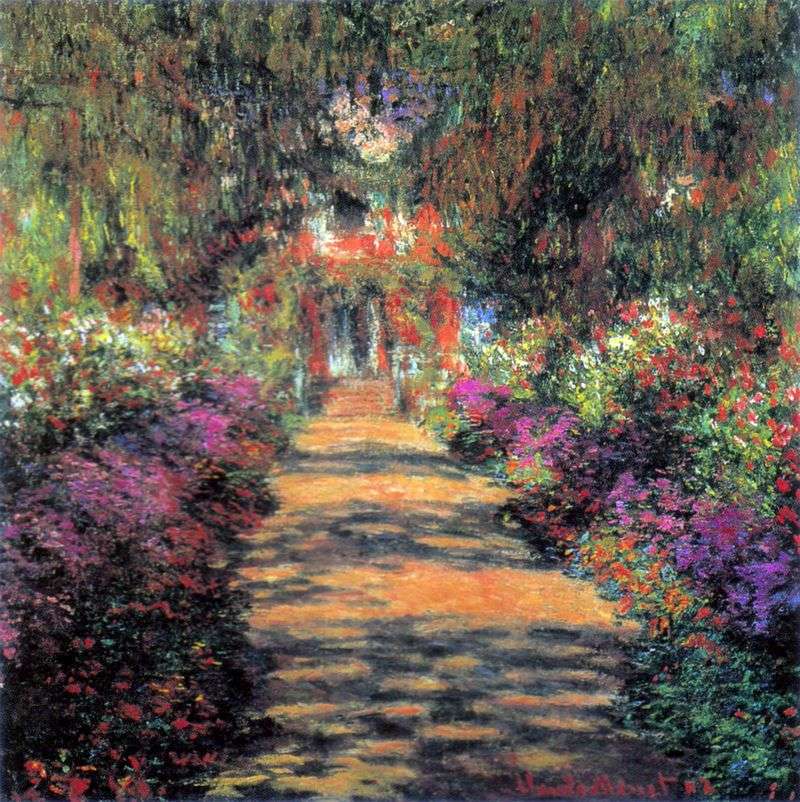
In the history of art, the name of the artist is closely related to his home in Giverny. Since 1883, he rented this house from a Norman landowner 80 kilometers north of Paris. Here Monet lived forty-three years, until his death in 1926.
Settling in Giverny, Claude Monet acquired a plot of land there, and, having diverted the water of the Epta river there, he arranged a garden with ponds. The garden is in front of the house, and the strict straight lines of the alleys stand in relief in contrast with the colorful carpet of flowers fragrant all year long, which changed several times a year. The garden has become Monet’s favorite child, and it is not surprising that the motives of this garden occupy a large place in the work of the artist. Almost all his life, Monet lived in houses with a garden, and in Arzhantey, and in Veteia, and in Giverny, and he certainly imprinted them on the pictures.
The main garden path is immersed in the rays of the spring sun. Light, thin strokes flit over the surface of the canvas, creating a feeling of gentle shimmer. Light permeates every inch of canvas, light shadows are transparent. Surprisingly, the “brio” of painting perfectly conveys a sense of wholeness and brightness of the visual perception of nature.
After his visit to Monet, German art historian Julius Mayer-Graff noted: “Monet best of all reveals himself with his garden, which he planted around the country house. He created it according to the same principles as his paintings… Each individual flower joins general harmony of colors. “
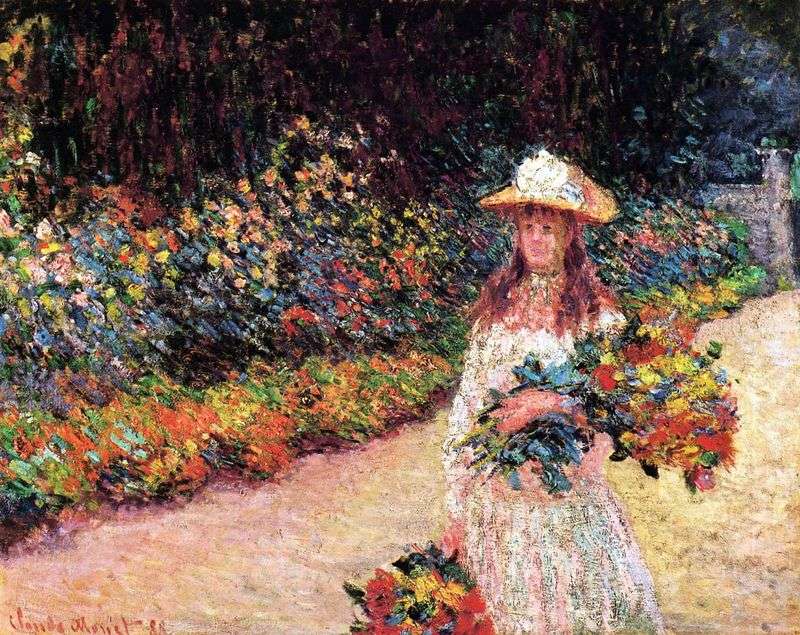 Girl in the Garden, Giverny by Claude Monet
Girl in the Garden, Giverny by Claude Monet Artist’s Garden at Giverny by Claude Monet
Artist’s Garden at Giverny by Claude Monet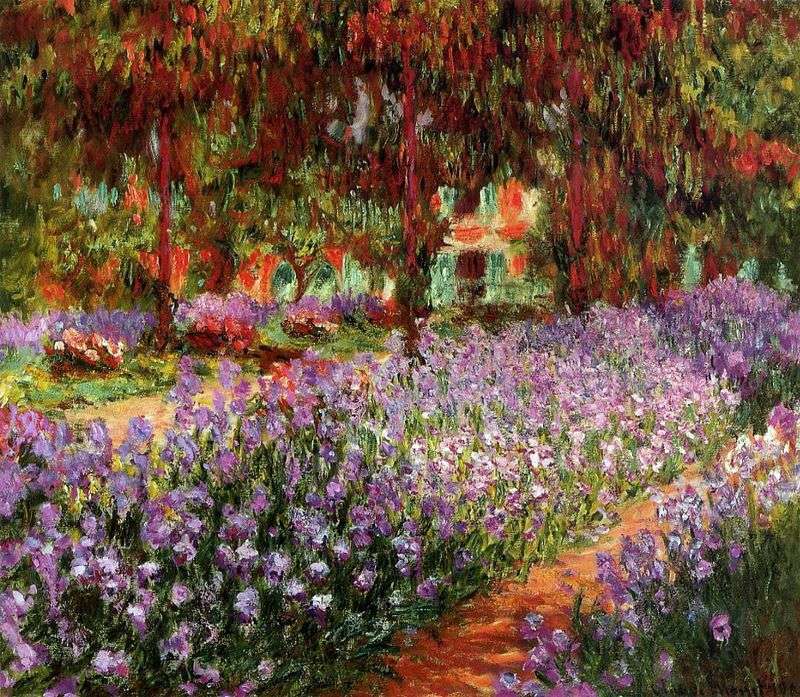 The Garden (Irises) by Claude Monet
The Garden (Irises) by Claude Monet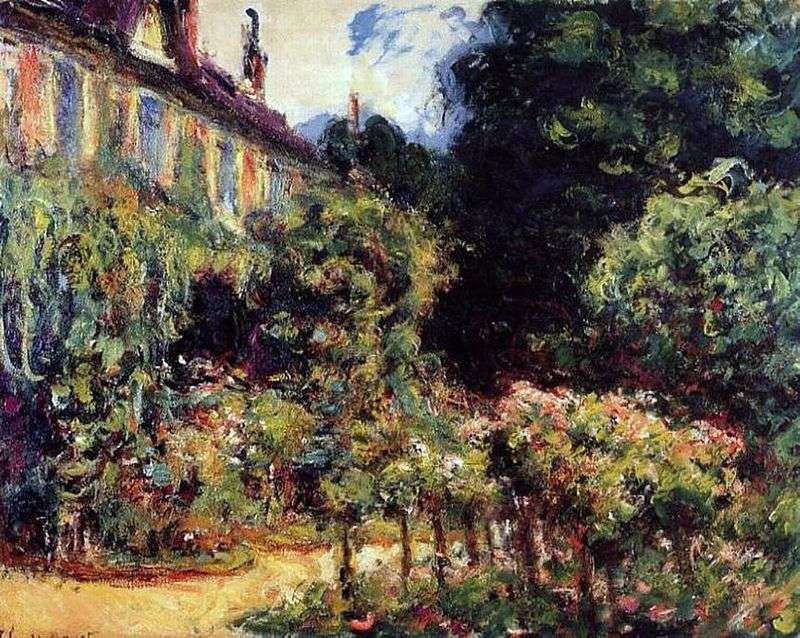 Artist’s House in Giverny by Claude Monet
Artist’s House in Giverny by Claude Monet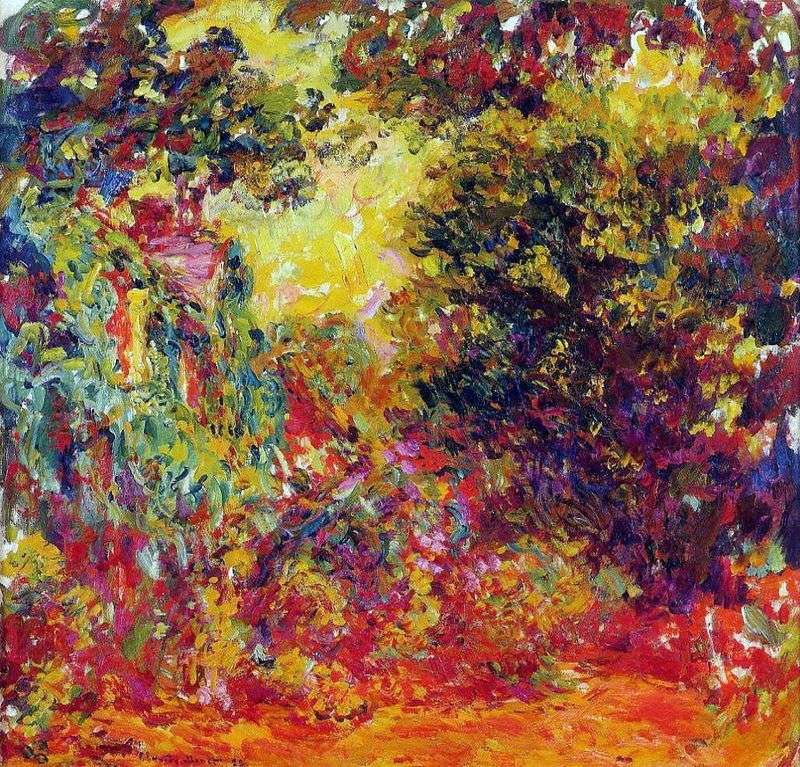 House of Artists, view from the rose garden by Claude Monet
House of Artists, view from the rose garden by Claude Monet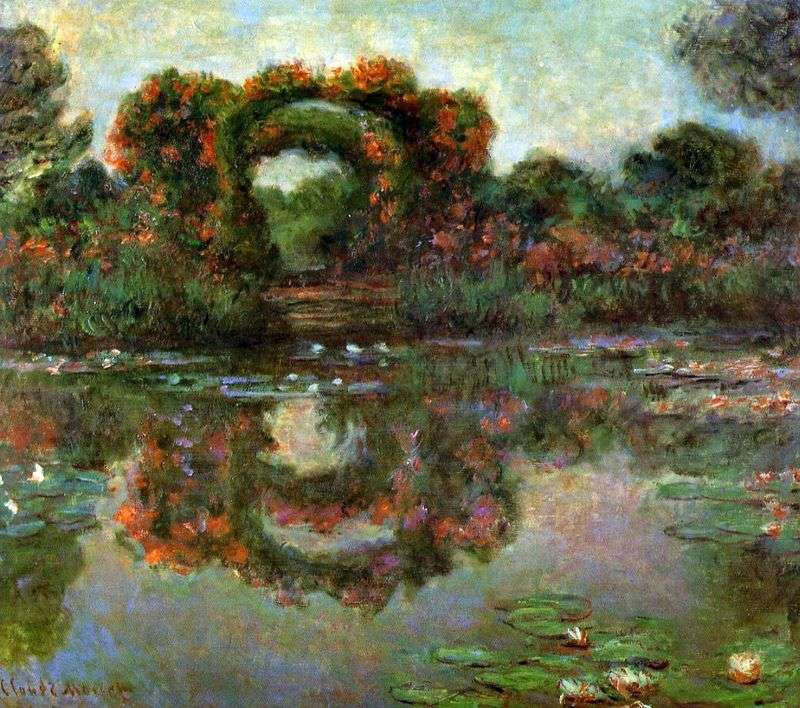 Arch in flowers, Giverny by Claude Monet
Arch in flowers, Giverny by Claude Monet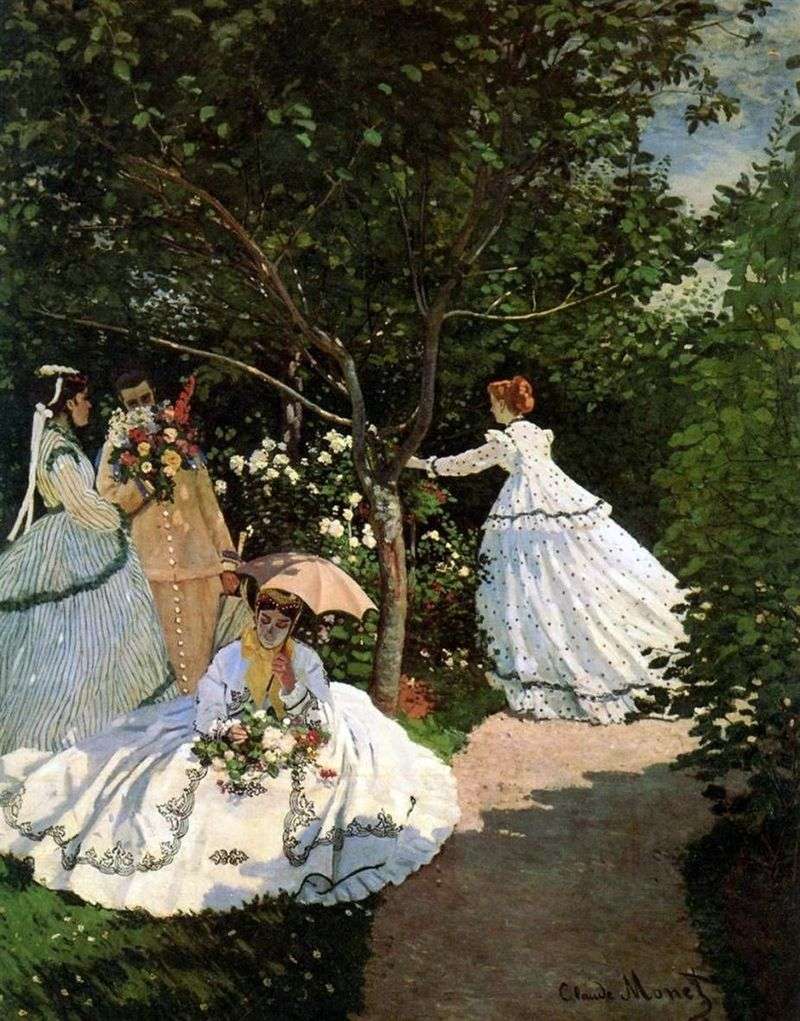 Women in the Garden by Claude Monet
Women in the Garden by Claude Monet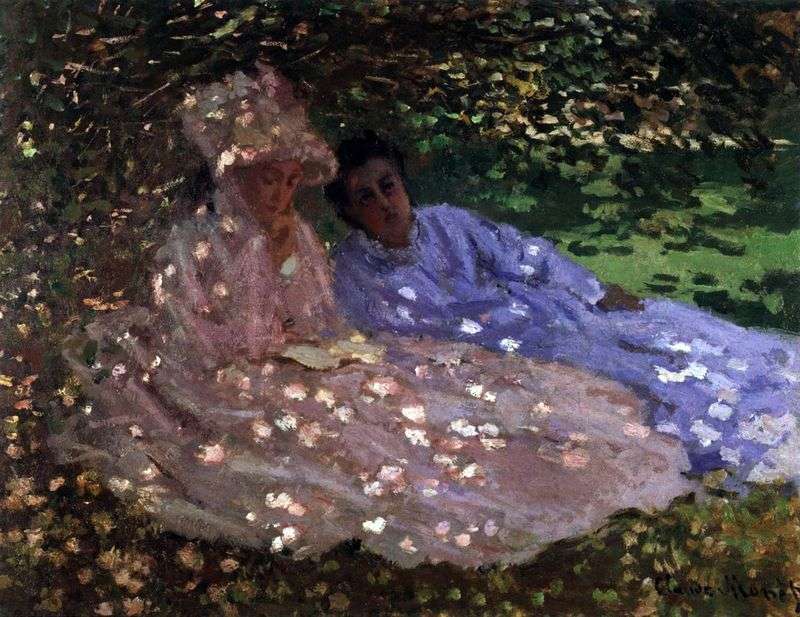 Madame Monet in the garden by Claude Monet
Madame Monet in the garden by Claude Monet